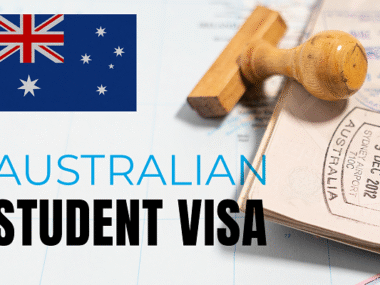Australia has long been a dream destination for many aspiring migrants seeking better career opportunities, a high standard of living, and vibrant cultural experiences. The Australian work visa system is designed to attract skilled workers from around the world, allowing them to contribute to the country’s economy while providing pathways to permanent residency and citizenship.
This article will guide you through the different types of work visas available, their requirements, and the application procedures to help you navigate the process smoothly.
Understanding Australian Work Visas
When discussing Australian work visas, it’s important to recognize that there are various types tailored to different circumstances and qualifications. These visas cater to both skilled workers looking to migrate from abroad and those already residing in Australia seeking to transition to permanent residency.
1. Temporary Skill Shortage Visa (Subclass 482)
One of the most popular visas for skilled workers is the Temporary Skill Shortage Visa (Subclass 482). This visa was established to address immediate labor shortages in specific industries and is employer-sponsored, meaning that a job offer from an Australian employer is essential.
Requirements:
- Job Offer: You must secure a job offer from an employer in Australia who is willing to sponsor you.
- Skills Assessment: Depending on your occupation, a skills assessment may be required, but this process is typically expedited.
- English Proficiency: You must demonstrate adequate English language skills, usually with an IELTS score of at least 5.0 in each band or equivalent.
Application Process:
- Employer Nomination: Your employer must submit a nomination for you to work in their organization.
- Visa Application: Once nominated, you can apply for the visa online via the Department of Home Affairs website.
The processing time for this visa can be as quick as two weeks, making it an attractive option for those seeking to move to Australia swiftly.
2. Employer Nomination Scheme (Subclass 186)
For those looking for a pathway to permanent residency, the Employer Nomination Scheme (Subclass 186) is a viable option. This visa allows skilled workers to live and work in Australia permanently if they are nominated by an approved employer.
Requirements:
- Job Offer: You must receive a permanent job offer from an Australian employer.
- Skills Assessment: A skills assessment may be necessary, depending on your occupation.
- Work Experience: Typically, you should have at least three years of relevant work experience in your field.
- English Proficiency: A minimum IELTS score of 6.0 in each band or an equivalent is required.
Application Process:
- Employer Nomination: Your employer must submit a nomination for you, detailing the position and its requirements.
- Visa Application: After receiving a nomination, you can apply for the visa online.
This visa is particularly advantageous for those who wish to settle permanently in Australia, as it provides a clear pathway to citizenship after four years of residency.
3. Skilled Independent Visa (Subclass 189)
The Skilled Independent Visa (Subclass 189) is designed for skilled workers who are not sponsored by an employer, state, or territory. This visa operates on a points-based system, evaluating applicants based on their age, qualifications, work experience, and English language skills.
Requirements:
- Points Test: You need to score at least 65 points on the points test.
- Skills Assessment: You must have your skills assessed by the relevant assessing authority.
- English Proficiency: A minimum IELTS score of 6.0 in each band or equivalent is required.
Application Process:
- Expression of Interest (EOI): You must submit an EOI through the SkillSelect system, detailing your qualifications and experience.
- Invitation to Apply: If your EOI is successful, you will receive an invitation to apply for the visa.
- Visa Application: You can then apply for the visa online.
This visa allows you to live and work permanently in Australia and is ideal for individuals with in-demand skills looking to migrate independently.
4. Skilled Nominated Visa (Subclass 190)
Similar to the Subclass 189 visa, the Skilled Nominated Visa (Subclass 190) requires nomination by a state or territory government. This visa also uses a points-based system to assess eligibility.
Requirements:
- Nomination: You must be nominated by an Australian state or territory government.
- Points Test: A minimum score of 65 points is required.
- Skills Assessment: A relevant skills assessment must be completed.
- English Proficiency: You need to demonstrate sufficient English language skills, usually a minimum IELTS score of 6.0 in each band or equivalent.
Application Process:
- EOI Submission: Submit an EOI indicating your interest in the visa and your qualifications.
- Nomination by a State/Territory: If selected, a state or territory will nominate you based on their labor market needs.
- Visa Application: After receiving a nomination, apply for the visa online.
This visa provides permanent residency and is particularly beneficial for individuals whose skills are in demand in specific regions of Australia.
5. Skilled Work Regional (Provisional) Visa (Subclass 491)
The Skilled Work Regional (Provisional) Visa (Subclass 491) is designed for skilled workers who wish to live and work in designated regional areas of Australia. This visa is also employer-sponsored and requires a nomination from a state or territory government or an eligible family member.
Requirements:
- Nomination: You must be nominated by an Australian state or territory or sponsored by an eligible family member.
- Points Test: A minimum score of 65 points is necessary.
- Skills Assessment: A skills assessment must be completed for your occupation.
- English Proficiency: You need to demonstrate English language proficiency, typically with an IELTS score of at least 6.0 in each band.
Application Process:
- EOI Submission: Submit an EOI through the SkillSelect system.
- Nomination: Obtain a nomination from a state or territory or sponsorship from an eligible family member.
- Visa Application: Apply for the visa online once nominated.
The Subclass 491 visa is a temporary visa that allows you to live and work in regional Australia for five years, after which you may apply for permanent residency through the Subclass 191 visa.
6. Temporary Graduate Visa (Subclass 485)
The Temporary Graduate Visa (Subclass 485) is aimed at international students who have recently graduated from an Australian institution. This visa allows graduates to work in Australia temporarily while gaining valuable experience in their field.
Requirements:
- Eligible Qualifications: You must hold an eligible qualification from an Australian educational institution.
- English Proficiency: You need to demonstrate proficiency in English.
- Application Timeline: You must apply within six months of receiving your qualification.
Application Process:
- Gather Documentation: Collect all necessary documents, including your qualification and English test results.
- Visa Application: Apply for the visa online through the Department of Home Affairs website.
This visa is typically granted for 18 months to two years, depending on your qualifications, allowing you to gain work experience in Australia.
7. Working Holiday Visa (Subclass 417)
The Working Holiday Visa (Subclass 417) is designed for young people (usually aged 18 to 30) from eligible countries who wish to travel and work in Australia for up to one year.
Requirements:
- Age Limit: You must be between 18 and 30 years old at the time of application.
- Eligible Countries: You must hold a passport from an eligible country.
- No Dependents: You cannot have any dependents accompanying you.
Application Process:
- Online Application: Apply for the visa online through the Department of Home Affairs website.
- Travel Insurance: It is advisable to have travel insurance for the duration of your stay.
This visa allows you to work in various jobs while traveling across Australia, providing a unique opportunity to explore the country.
8. Distinguished Talent Visa (Subclass 124)
The Distinguished Talent Visa (Subclass 124) is for individuals with exceptional talent in specific fields, such as sports, arts, or academia. This visa allows talented individuals to live and work in Australia permanently.
Requirements:
- Exceptional Talent: You must demonstrate an internationally recognized record of achievement in your field.
- Nomination: You need to be nominated by an Australian citizen, permanent resident, or organization with a national reputation.
Application Process:
- Gather Evidence: Compile documentation showcasing your achievements and recognition in your field.
- Visa Application: Submit your visa application online after obtaining a nomination.
This visa is ideal for individuals who have made significant contributions to their field and wish to continue their work in Australia.
9. Seasonal Worker Program
The Seasonal Worker Program allows employers in Australia to hire workers from certain Pacific island countries for seasonal work in agriculture and tourism. This program is primarily aimed at addressing labor shortages in these industries.
Requirements:
- Eligibility: Applicants must come from eligible countries, including Papua New Guinea, Solomon Islands, and others.
- Job Offer: You must have a job offer from an approved employer in Australia.
Application Process:
- Employer Sponsorship: Your employer must sponsor your visa application.
- Visa Application: Apply for the visa online through the Department of Home Affairs.
This program provides a unique opportunity for seasonal workers to gain work experience in Australia while supporting the local economy.
Application Process for Australian Work Visas
Regardless of the type of work visa you choose, the application process generally involves the following steps:
1. Determine Eligibility
Before applying, ensure that you meet the eligibility criteria for your desired visa. Research the specific requirements for your occupation and visa type.
2. Gather Documentation
Collect all necessary documents, including:
- Valid passport
- Skills assessment (if required)
- English language proficiency results
- Job offer or nomination (if applicable)
- Medical examinations
- Character checks
3. Submit an Expression of Interest (EOI) (if applicable)
For visas that require an EOI, submit it through the SkillSelect system. Your EOI will include details about your qualifications, work experience, and language skills.
4. Apply for the Visa
Once you receive an invitation to apply (if applicable) or have secured a job offer/nomination, complete your visa application online. Ensure that all information is accurate and complete.
5. Pay the Application Fee
Most visa applications require a fee, which varies depending on the visa type. Be prepared to pay this fee during the application process.
6. Wait for Processing
Processing times vary by visa type. Check the Department of Home Affairs website for estimated processing times. During this period, you may be required to provide additional information or attend an interview.
7. Receive Visa Decision
Once your application is processed, you will receive a decision via email. If granted, your visa will specify the conditions and duration of your stay in Australia.
Conclusion
Working in Australia offers numerous opportunities for skilled individuals seeking to enhance their careers while enjoying the vibrant culture and lifestyle the country has to offer. Understanding the various work visa options, their requirements, and the application procedures is essential for a smooth transition to your new life in Australia.
Whether you aim for temporary employment or permanent residency, careful planning and preparation will help you achieve your goals. With dedication and the right approach, you can navigate the complexities of the visa process and embark on a rewarding professional journey in Australia.

